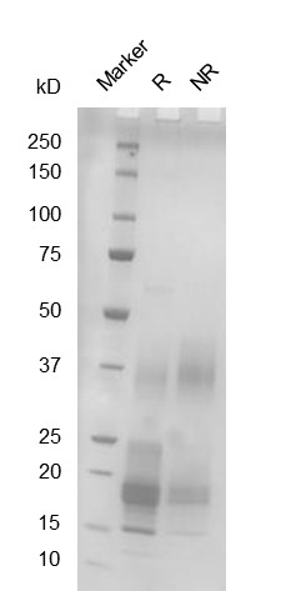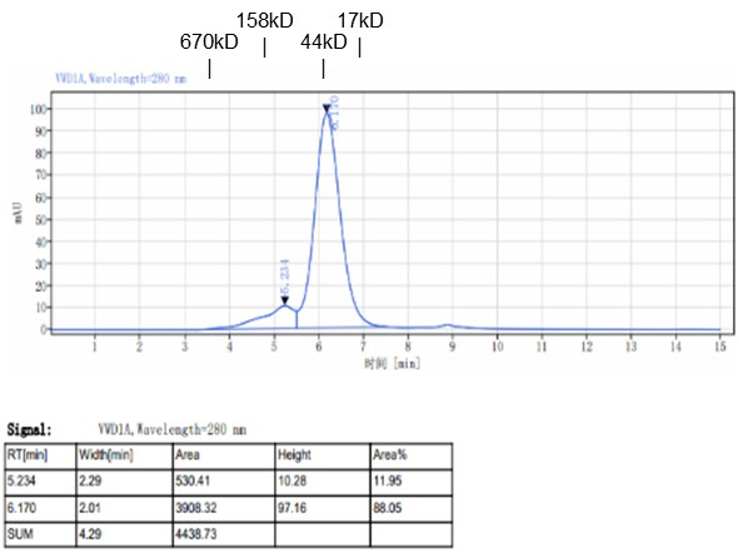mIFNg(23-155)-His
Description
Interferon gamma (IFNg) is the sole member of the type II interferon family that produced by immune cells, including T-cells and NK cells. It plays pivotal roles in antimicrobial, antiviral, and antitumor responses by activating effector immune cells and enhancing antigen presentation. IFNg serves as a key player in host defense by promoting the development and activation of Th1 cells, chemoattraction and activation of monocytes and macrophages. It functions as an anti-inflammatory mediator by promoting regulatory T cells development while inhibiting Th17 cell differentiation. IFNg primarily signals through the JAK-STAT pathway after interaction with its receptor IFNGR1 to affect gene regulation. Upon binding, IFNGR1 intracellular domain undergoes conformational changes to allow association with downstream signaling components JAK2, JAK1 and STAT1, leading to STAT1 activation, nuclear translocation and transcription of IFNG-regulated genes. IFNg also contributes to class I antigen presentation pathway by inducing replacement of catalytic proteasome subunits with immunoproteasome subunits. Thereby, it increases the quantity, quality, and repertoire of peptides for class I MHC loading. IFNg up-regulates MHC II complexes on cell surface as well through promotion of expression levels for several key molecules such as cathepsins B/CTSB, H/CTSH, and L/CTSL.
Product name | mIFNg(23-155)-His |
Species | Mus musculus |
Expression system | HEK293 |
Buffer | PBS, pH 7.4 |
Delivery condition | Dry ice (-80°C) |
Delivery Time | 1 week if in stock; 4 weeks if production needed |
Storage condition | Store at -80°C |
Brand | BioMetas |
Applications | AIDS/HIV , Allergy Research, Angiogenesis/Cardiovascular Research, Cancer Research, Diabetes/Weight Regulation, Immune Checkpoint, Immune System, Immunotherapy, Infectious Diseases, Inflammation Research, Neurobiology Research, Neuroinflammation, Stem Cells & Differentiation, Targeted Therapy, Transplantation Research |
Aliases/Synonyms | IFN-gamma, immune interferon, type II interferon, T cell interferon, IFNG, IFG, IFI, MAF |
Reference | |
Note | For research use only. Not suitable for clinical or therapeutic use. |
Size | 1mg, 5mg, 10mg, 50mg, 100mg |
Brand | BioMetas |
Product type | Cytokine |
Expression system | HEK293 |
Applications | AIDS/HIV , Allergy Research, Angiogenesis/Cardiovascular Research, Cancer Research, Diabetes/Weight Regulation, Immune Checkpoint, Immune System, Immunotherapy, Infectious Diseases, Inflammation Research, Neurobiology Research, Neuroinflammation, Stem Cells & Differentiation, Targeted Therapy, Transplantation Research |
Contact Us for a Quote!
Data Gallery
Fig. 1.) 4-20% SDS-PAGE analysis
Recombinant protein was visualized by Coomassie Brilliant Blue R250 staining.

Fig. 2.) SEC-HPLC analysis
Column: Superdex 200 Increase 5/150 GL
Running buffer: 2xPBS, pH 7.4
